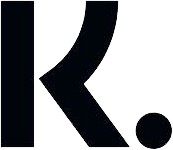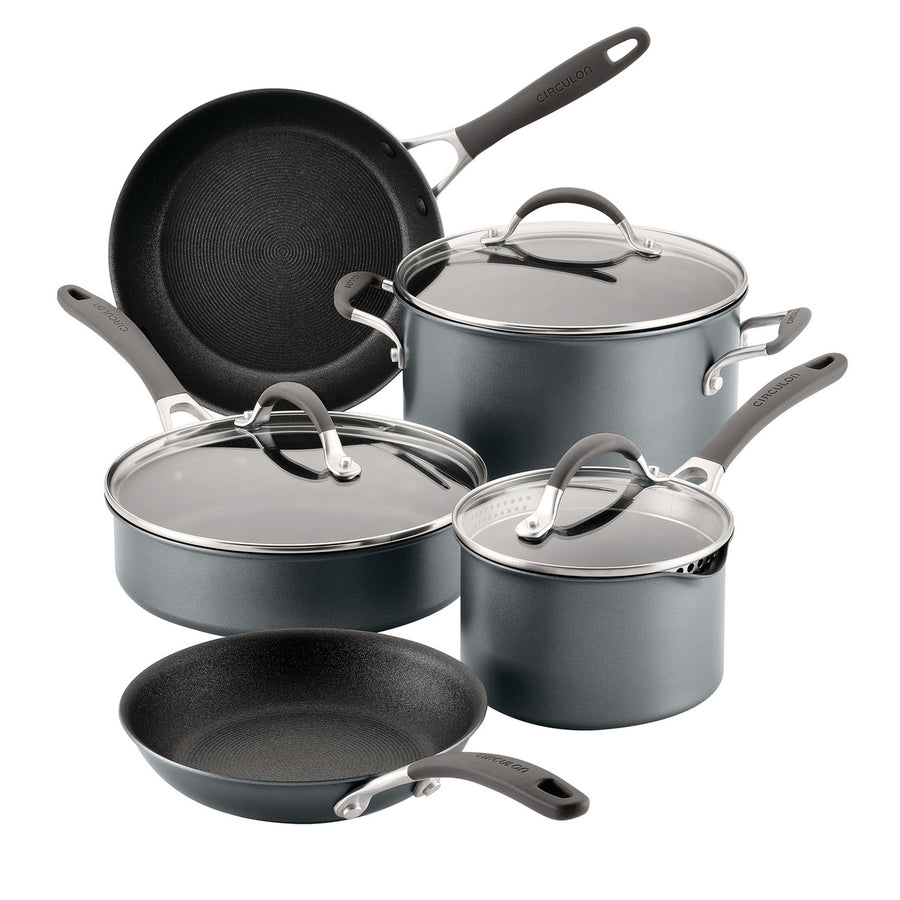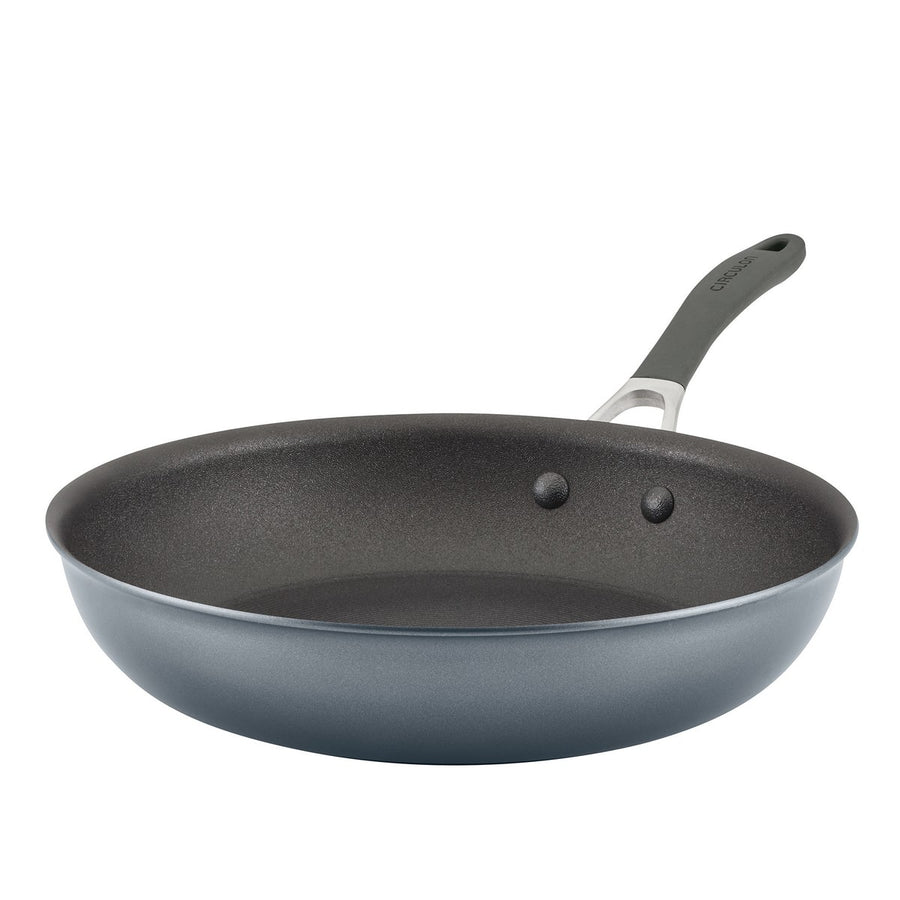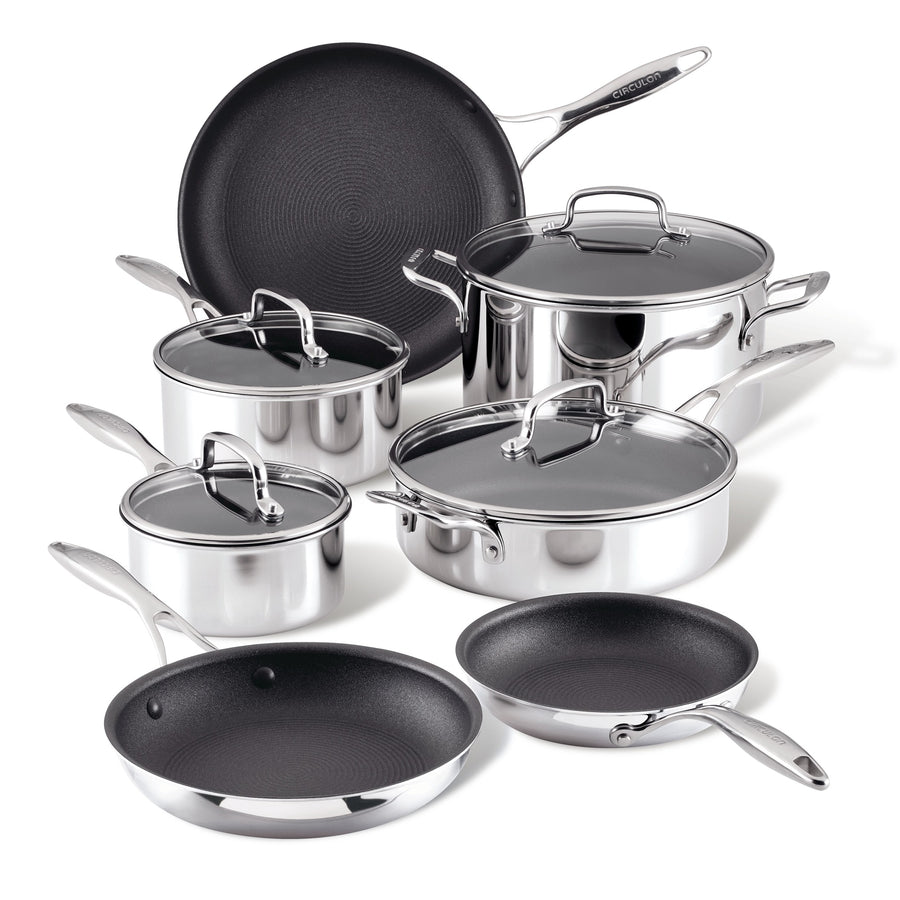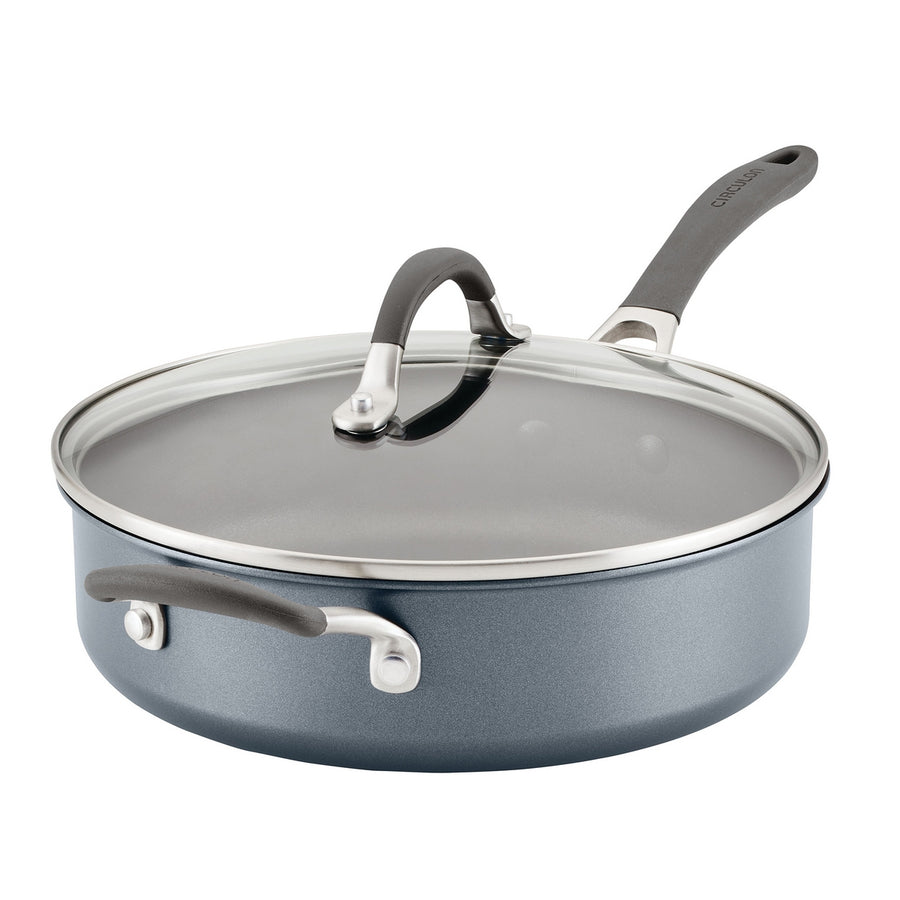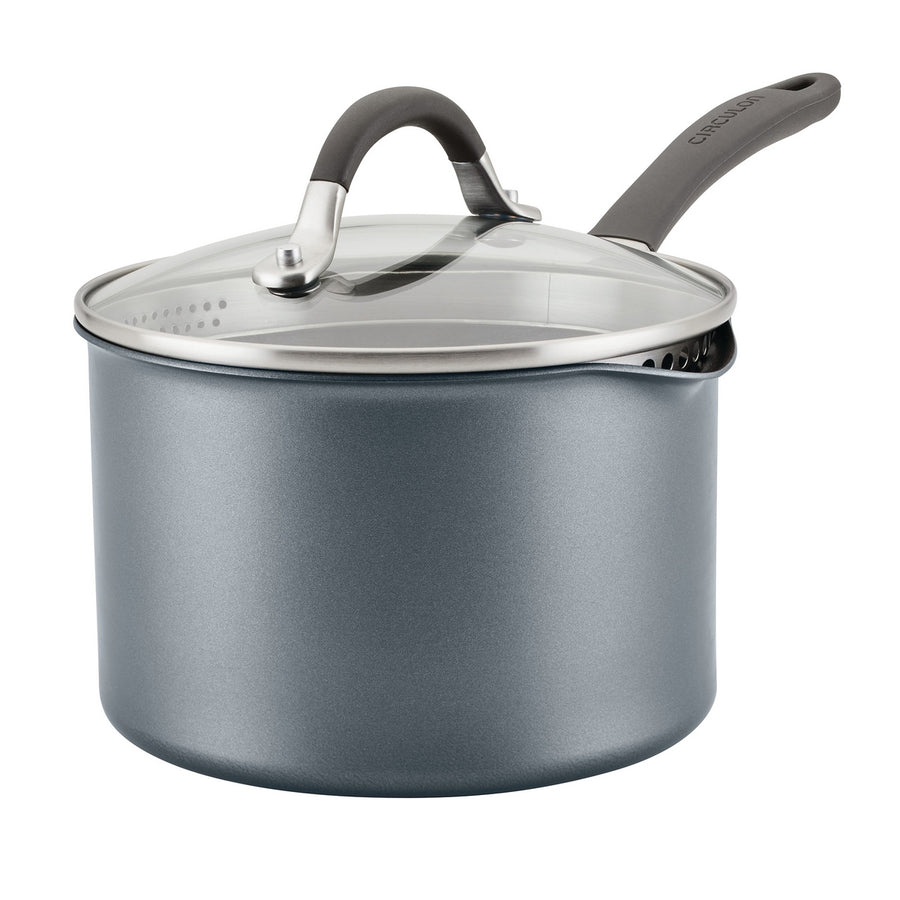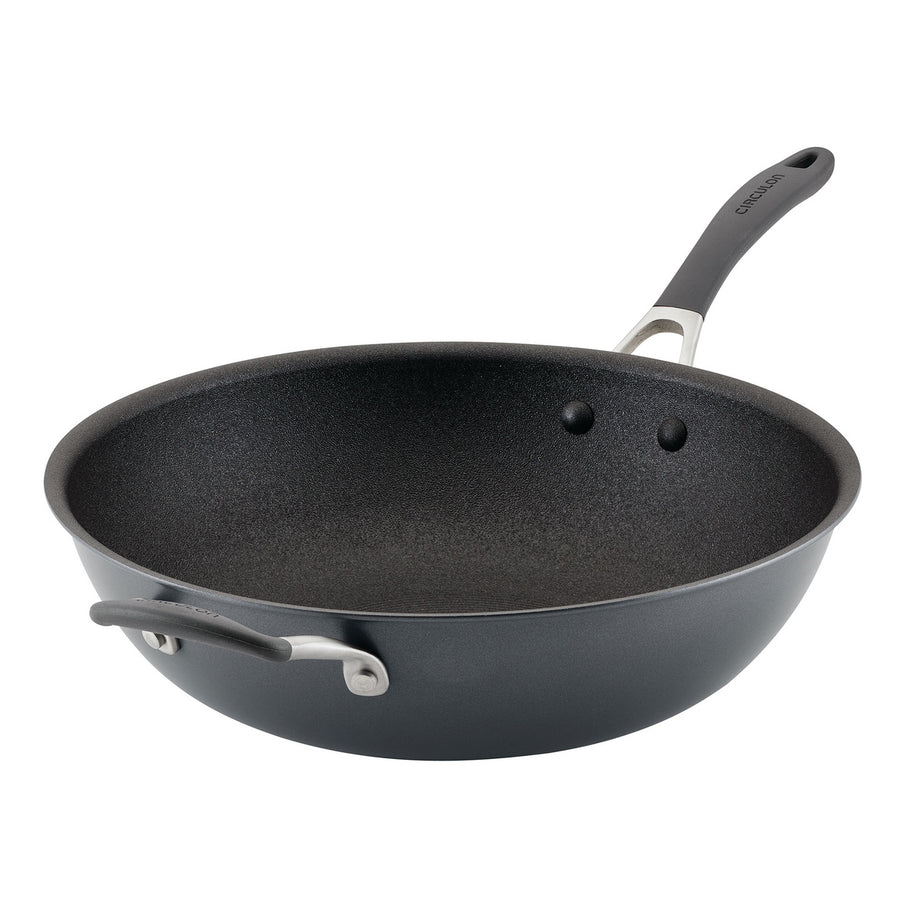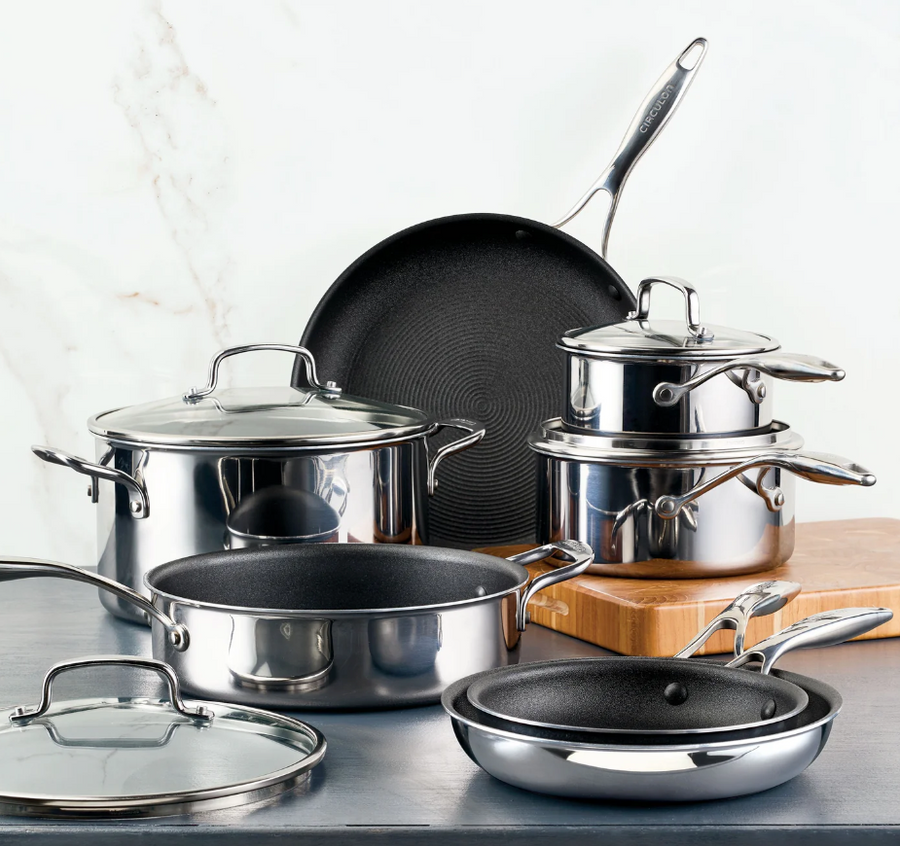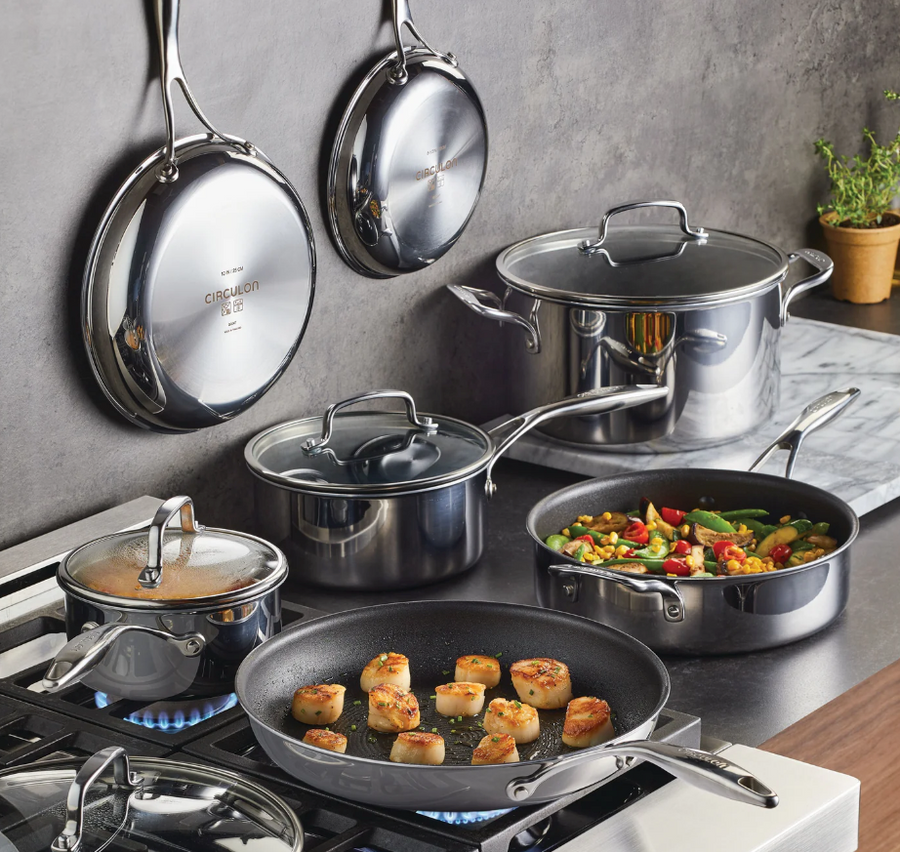The TL;DR
Reading a long article can be tedious, so here's the TL;DR (Too Long; Didn’t Read).
What is the process of deciding which oven and baking tray to buy?
-
Oven trays vs. baking trays: the main difference is depth; oven trays have deeper sides for collecting fats from meats, while baking trays are shallower for flat baking. Both are often made of heavy-gauge carbon steel.
-
Types of oven trays: the main types of oven trays are traditional oven trays (for versatile cooking), and roasting trays (with racks for better meat roasting).
-
Types of baking trays: the most common types of baking trays are traditional baking trays (square or rectangular), and Circulon's unique cookie sheets (with insulated air pockets for even baking).
-
Material matters: the best oven and baking trays are manufactured from carbon steel, for usability, longevity, and even cooking.
Partial to a bit of baking? Enjoy placing your latest creation in the oven? Then good quality oven and baking trays are a must. The thing is, what makes a good baking tray? What characteristics should you look for in an oven tray? Discover the answer to these questions and more in this guide from the Circulon team…
Oven Trays vs Baking Trays: What’s the difference?
Before we delve deep into the details of these essential items of bakeware and ovenware, we want to answer a question we receive all too often; is there actually a difference between oven trays and baking trays?
A casual glance would suggest not. But, look a little more carefully, and you’ll see there are some fundamental differences (as well as similarities) between the two types of tray.
Dimensions
This is the primary difference between the two types of tray. Oven trays tend to have deeper sides than baking trays.
Why? Because of their respective purposes. Standard baking trays are typically designed to provide a level surface upon which foodstuffs can be baked.
Oven trays, on the other hand, have deeper sides. This is because they are designed to cook foods - such as meats - that require the tray to have deeper sides that can collect fats etc.

Material
Whilst oven trays and baking trays may differ in their dimensions, they do tend to share one particular characteristic - the material from which they are made.
Here at Circulon, both our oven trays and baking trays are manufactured from heavy-gauge carbon steel. As we’ll describe later in this article, the material from which oven and baking trays are made is particularly important - it can impact a variety of factors from the usability and longevity of a tray, to the way in which it contributes to the cooking of a foodstuff.
Price
Certainly here at Circulon, you’ll find that there is generally no price differential between oven trays and baking trays.
The price you’ll generally pay for either a baking tray or oven tray is largely determined by the size and material of the tray in addition to any other features (such as being non-stick or dishwasher safe).
When shopping for a baking tray or oven tray it's also worth checking what sort of guarantee (if any) the tray comes with. Here at Circulon you’ll find that all of our baking and oven trays come with a limited lifetime guarantee.

What are the different types of Oven Tray?
Just as there is a distinct difference between oven trays and baking trays, there are a number of different types of oven tray available. These include:
-
Traditional oven trays - as described above, these are your classic oven tray, that allow you to cook a variety of foodstuffs including meats of various kinds. They’re also ideal for cooking things like oven-ready chips and other frozen foods. Our Ultimum Non-Stick Roasting Oven Tray Set - 2 Pieces is a great example.
- Roasting trays - as the name suggests, roasting trays have been designed with the roasting of meats forefront of mind. Many roasting trays - in addition to having deep sides - contain a rack which further facilitates the cooking of meats. Our Non-Stick Family Roasting Tin & Rack is a perfect example of this.
Tip - you can find each of these types of oven tray within our dedicated oven tray collection.
What are the different types of Baking Tray?
Baked goods are varied - just think of the various flans, muffins and cakes you’re likely to have encountered at some point during your life. Accordingly then, it’s possible to buy many different types of baking tray.
The types of baking tray you’ll find here at Circulon are:
-
Traditional baking trays - square or rectangular trays that offer the flexibility to bake a variety of foodstuffs.
-
Cookie sheets - arguably unique to Circulon, a cookie sheet is a type of oven tray that’s designed to help you cook baked goods. An insulated air pocket within the tray protects your baked goods from intense heat, allowing you to achieve a perfect bake.
-
Yorkshire pudding tins - the name says it all! Yorkshire pudding tins allow you to cook multiple Yorkshire puddings at the same time; perfect for a Sunday roast.
-
Muffin trays - again, the name says it all. Muffin trays allow you to cook multiple muffin type baked goods simultaneously.
-
Flan tins - want to cook a delicious flan? Then you’ll want a flan tin. Shaped to provide that traditional ‘flan finish’, flan tins can be typically used to create quiches and tarts also.
-
Cake tins - cake tins can take a number of forms, from larger rectangular cake tins to smaller round tins with a ‘release mechanism’ that allows you to remove the finished cake without damaging it. Simply choose the type of cake tin that is appropriate for the size/types of cake you bake on a regular basis.
- Loaf tins - there’s little better than enjoying freshly baked bread at home, and a loaf tin is what you’ll need to make this a reality. Loaf tins are typically quite heavy; this is to ensure both durability and a consistent baking experience.
Tip - explore all these types of baking tray in our baking tray collection.

Oven & Baking Tray buying considerations
So, whether you want an oven tray or a baking tray, what should you be taking into consideration when making a purchase?
Yes, oven and baking trays are arguably very simple items - but, look closer, and you’ll find that there can be a considerable amount of science and innovation that goes into them (or at least that’s the case here at Circulon!).
So, to help you buy the perfect oven or baking tray for your needs the Circulon team has set out our key buying considerations below.
Material
Let’s be clear; this is the most important consideration when buying a baking tray or oven tray.
The type of material from which a tray is made will determine everything from its longevity to its cooking/baking characteristics.
It’s why buying cheaper trays, made from cheap materials, is almost always a false economy.
With that being said, what does ‘good’ look like when it comes to baking and oven tray materials?
Well, let’s take a look at the options:
Steel
The most widely used material in the manufacture of baking and oven trays, steel is strong, ductile, hard and resistant to corrosion - all characteristics that make it perfect for baking and cooking.
However, contrary to what many people think, steel doesn’t refer to a single ‘generic’ material. In fact, depending on what it is alloyed with, steel can take many different forms. For the purposes of oven and baking trays, you’ll tend to find two main types of steel being used:
- Stainless steel.
- Carbon steel.
Stainless steel
Widely attributed as being the invention of Harry Brearley of Sheffield, stainless steel is one of the most widely manufactured metals in the world (it’s estimated that approximately 55.3 million metric tons of the stuff was produced in 2022).
It’s become the ‘go to’ material for cookware and bakeware for good reason. It’s not only corrosion resistant (for which reason it's also called ‘inox’ from the French word for stainless, ‘inoxydable’), but is also incredibly heat-resistant - meaning it can withstand the high temperatures of a domestic oven.
From a green perspective, stainless steel is also 100% recyclable - once your stainless steel baking tray has reached the end of its life, simply send it to recycling and the steel will end up in another product.
But, what is it that gives stainless steel these remarkable properties? It’s largely down to the way in which it is alloyed (alloying simply refers to the act of combining two or more metallic elements).
Austenitic stainless steel - which is the type of stainless steel that is most commonly used for cookware and bakeware - is steel which has been alloyed with a certain percentage of both chromium and nickel.
Note - stainless steel itself doesn’t refer to a single generic type of material. There are actually over 150 different grades of stainless steel.
Carbon steel
The second main type of steel that’s used in the manufacture of oven trays and baking trays is carbon steel.
As you’ve probably gathered, carbon steel gains its name from the higher concentration of carbon it contains (over other types of steel). Whereas most types of steel have a carbon content of around 0.05% to 0.03%, by contrast carbon steel has a carbon content of around 1%. It may not sound like much, but it can make a big difference.
So, what makes carbon steel so special (other than its high concentration of carbon)? The answer lies in the characteristics of this material:
-
Carbon steel is very strong (more so than stainless steel). As such, it will resist considerable stresses and loads. It’s because of its strength that carbon steel has been traditionally used by Japanese blade makers.
-
Carbon steel is a quick and even conductor of heat. This allows items such as carbon steel oven and baking trays to quickly and evenly cook foodstuffs. Given the even way in which it heats up, carbon steel reduces the likelihood of you experiencing hot or cold spots across a tray.
-
Carbon steel is very temperature resistant. Thanks to its high carbon content, carbon steel is very heat-resistant; this provides things like carbon steel oven trays with long lifespans. To give you a tangible example, the oven trays here at Circulon are oven safe up to 230ºC.
-
Carbon steel is lightweight. Compared to other materials like cast iron, carbon steel is very lightweight. As a result, carbon steel oven and baking trays are a pleasure to use!
- Carbon steel is easy to recycle, and is thus a greener choice.
Note - all Circulon oven and baking trays are manufactured from carbon steel.
Aluminium
Another commonly used material in the manufacture of oven trays and baking pans is aluminium.
Aluminium is an elemental metal and is widely produced; around 68 million tonnes of it was produced in 2022.
That’s all very well, but how does aluminium fare as a material for trays? On the plus side, aluminium oven and baking trays tend to be both cheap and lightweight. However, on the negative side, aluminium bake and ovenware can be quite malleable, making it easy to dent and damage. Aluminium can also prove to be reactive with certain acidic ingredients (like tomatoes, citrus fruits etc). Although aluminium trays can be coated to prevent this, these coatings will typically diminish over time.
Aluminium oven and baking trays also don’t tend to distribute heat well (particularly not compared to carbon steel). It’s for these reasons that aluminium tends to only be used on cheaper, more budget oriented oven and baking trays.
Glass
The third material that you may see used for oven and baking trays is glass. Now, we hasten to add that this isn’t the type of glass you get in your window panes.
Glass baking trays and oven trays are usually made from what’s known as ‘borosilicate’ glass. This is a type of glass where silicon and boron trioxide are the main glass-forming constituents. This combination of constituents makes borosilicate glass highly temperature resistant.
Does glass make for a good baking tray material then?
It has its pros and cons. Pros include the fact that it is naturally non-stick and easy to clean. In terms of ‘cons’, glass is a natural insulator. This means it can take a considerable amount of time to heat up - meaning you’ll spend time waiting for your food to cook in the oven.
Stoneware
This is an older option, but it is possible to buy stoneware baking and oven trays.
Made from clays that are subsequently moulded, fired and glazed, stoneware trays have been around for centuries.
Whilst stoneware is a good conductor of heat, it does tend to be overly heavy. Perhaps most importantly, if dropped, stoneware has a tendency to shatter and break.
Summary - if you’re looking for an oven tray or baking tray that has excellent cooking/baking properties, is durable and long-lasting, lightweight and value for money, it has to be carbon steel.
Temperature resistance
Aside from the material from which it is made, another very important characteristic to consider in a baking or oven tray is its temperature resistance.
But, why is this so important?
It’s largely down to the stresses and strains that oven and baking trays can be subjected to when placed in a hot oven.
If you don’t buy an oven or baking tray with appropriate heat resistance, you can experience the following issues:
- Bending and warping as a result of ‘thermal shock’. Trays can be subject to big changes in temperature within short periods of time. If they aren’t sufficiently heat-resistant, they can bend and warp.
- Damage to non-stick coatings. If your chosen trays are not sufficiently heat-resistant, then it’s possible for the non-stick coating to be damaged by exposure to excessive temperatures.
- Improperly cooked foods. Should you choose a tray which does not have enough heat resistance, you may find that foodstuffs cook unevenly. A properly heat-resistant tray will provide a much more consistent cooking experience.
Here at Circulon you’ll find that our oven and baking trays are designed to safely handle a broad range of temperatures. Look for the ‘Freezer safe’ and ‘Oven safe’ labels within the product description.
Coating
Yes, the material from which a tray is made is very important, but don’t overlook the coating. In particular, we’d also recommend buying trays that have a non-stick coating. As you’ll see, this type of coating has several benefits.
The coating on an oven or baking tray can have a big impact on several characteristics. These include; cooking/baking properties, lifespan, and cleaning.
Let’s take each of these characteristics in turn:
Cooking and baking properties
A non-stick coating can yield a number of benefits in terms of cooking and baking. Aside from the obvious one - which is that food is less likely to get stuck to the pan/tray - non-stick coatings can reduce the amount of oil you have to use.
Not only will this help you make your cooking oil last longer, but it can potentially make your meals a tad healthier.
Lifespan
With a non-stick coating, an oven tray is likely to last far longer than a coating-free tray. Why? Well, the non-stick coating acts as a barrier to the material underneath, preventing corrosion and scratches.
Cleaning
We’ve all been there - stooped over the kitchen sink scrubbing and scrubbing trying to remove those stubborn, cooked-on bits of food from an oven tray.
With a non-stick oven tray you’ll be able to banish those gruesome kitchen sink sessions to history. That’s due to the fact that the majority of non-stick coatings are classed as ‘superhydrophobic’ - meaning they repel water (and other liquids), preventing adhesion.
PFOA-free
An important thing to check when looking at the coatings of oven and baking trays is what the coating is actually made of.
PFOA - which stands for perfluorooctanoic acid - is a synthetic, lab-made chemical which for many years was used as the main constituent of non-stick coatings. That was due to it being a fluorosurfactant making it highly repellent to water and other liquids.
However, in recent years, studies have emerged that suggest PFOA could be both a possible carcinogen and toxicant. In light of these studies regulations were implemented in the 2000s that banned the use of PFOA in domestic applications (such as cookware).
Nevertheless, we would suggest always checking that any cookware you buy is free from PFOA. ALL Circulon products are free from PFOA.
Dishwasher safe
With approximately 50% of all UK homes owning a dishwasher, it’s well worth checking if your chosen oven tray or baking tray is dishwasher safe. This will make your post-meal life much easier!
All Circulon oven and baking trays are dishwasher safe.
Oven safe
This sounds like a rather obvious point, but you should check that your chosen oven or baking tray is oven safe.
Or, more specifically, you should check the temperature range within which the tray can be safely used. Domestic ovens in the UK typically have a temperature range of up to 200ºC.
You’ll be (hopefully!) pleased to know that Circulon’s oven trays and baking trays are oven safe up to an impressive 230ºC.
Time for a new Oven or Baking Tray?
Then buy direct from Circulon. Not only do we have the UK’s best range of premium oven and baking trays (at amazing prices), but you can spread the cost of your purchase over three, interest-free payments with Klarna.
We also offer free delivery to selected locations and are rated excellent on Trustpilot.
